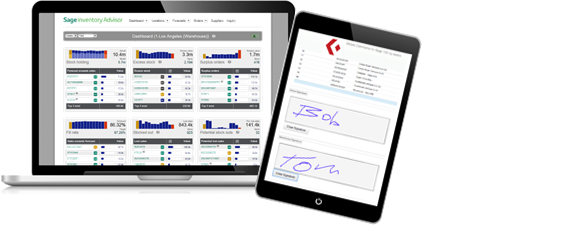We have previously discussed the benefits of integrating ERP and enterprise document management software (ECM), how to build a business case for document management software, and the current market for document management software. Today we venture beyond evaluation and selection and jump into what you can expect when it comes time to actually implement the solution and tie everything together.
Successful enterprise document management software implementation projects have many similar elements and characteristics. It’s important that you understand your requirements, identify your goals, select the right product, manage the implementation project, define the project scope, establish executive support, make changes to existing policies and procedures, provide training, consider security, and evaluate infrastructure requirements. It seems like a lot – and it is – but if you do it right you will gain new efficiencies and cost savings to take your business to the next level.
- Define the business requirements and goals for the ECM implementation. If possible, identify the desired ROI and establish a framework for measuring your results. Create an information survey to be completed by each department in your organization to help you define the requirements and existing business processes. The information survey will help you identify where problems occur, information gaps where communication completely breaks down, document retention policies (how long), and other information critical to selecting the right software and implementing it effectively.
It’s helpful if you can identify the costs in terms of cash and time related to the inefficiencies in your existing business processes. Quantify these and compare them to the investment you plan to make in your ECM software. Then set goals for cost and labor reductions and other measurable results so you can evaluate and identify the return on investment of the ECM project.
It’s critical to select a product that meets your current needs with the ability for the software to grow as your needs change.
ECM is an ever-changing process. Successful implementations include a project manager who oversees the initial implementation and on-going usage of the software.
ECM can be (and should be) implemented in phases. The scope of each phase should be clearly defined. For example, implement ECM for accounts payable and related processes then move on to account receivable, sales order, inventory, manufacturing, etc.
ECM will fail if executive management isn’t behind the project. You must get buy-in from all C-Level executives and departmental managers to impact significant change.
Review internal policies and change them as-needed to support ECM workflow.
ECM significantly impacts procedures in the organization cutting out manual steps. You will need to identify new procedures using ECM as the platform. Make sure that new procedures are well documented and users have been trained on the changes and what’s expected of them.
There is more to implementation than these first few steps, part two of this blog will cover the next steps including:
- Compliance
- Security
- Document classification
- Consolidation
- Infrastructure
- Training
- Pilot
- Go-live
- Audit
Check back soon for part two of this series.
We’ve developed these 8 tips to help navigate the many choices for ERP selection.Learn More Here



